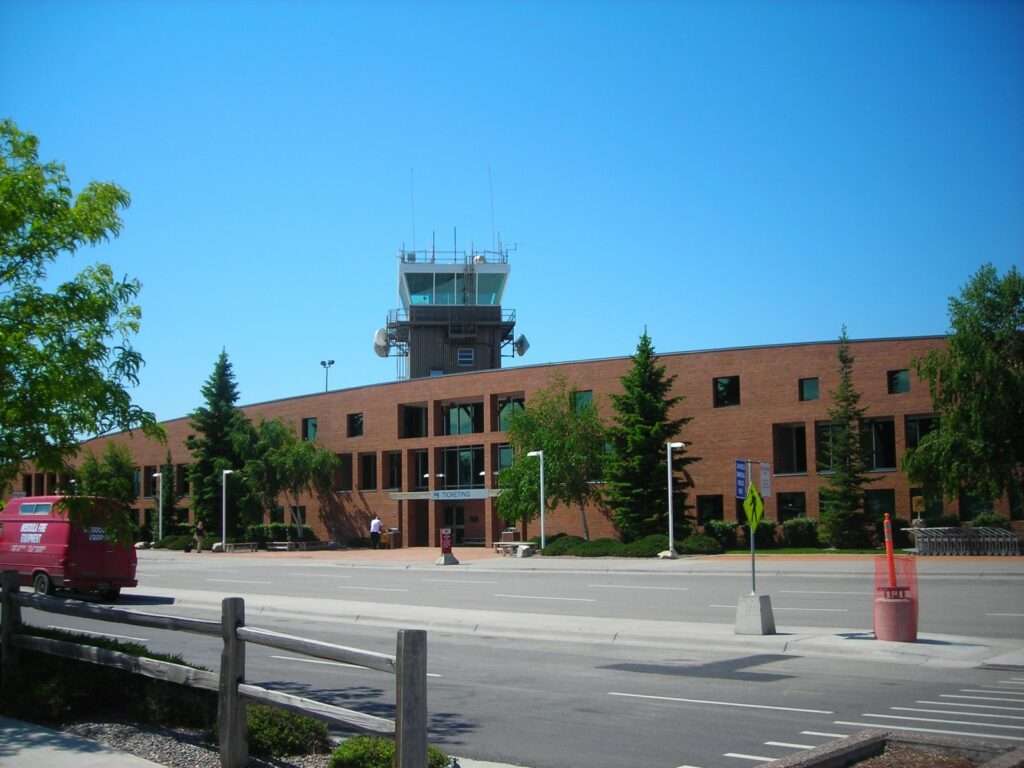Set amidst the stunning Montana landscape, Missoula Montana Airport (MSO) boasts a rich history connected with the region’s early aviation pioneers.
This article delves into the airport’s evolution, from its humble beginnings to its present-day status as a vital regional transportation hub.
Missoula Montana Airport: Origins in 1923
Missoula’s journey into the skies began not at the current location, but with two earlier landing strips.
The first, established in 1923 south of the University of Montana, served as a rudimentary airfield.
A second strip emerged near the fairgrounds, later becoming the city’s first official airport named Hale Field in 1935.
However, Hale Field closed in 1954 as the city expanded southward.
The year 1938 marked a turning point.
Recognizing the need for a more robust airport, President Roosevelt authorized funds through the Works Progress Administration (WPA) to construct the Missoula County Airport.
It was built on a sprawling 1300 acres (about twice the area of Central Park in New York City) west of Missoula.
Collaboration with US Forest Service
This collaboration with the US Forest Service, seeking enhanced air access for fire suppression efforts, led to the airport’s opening in 1941.
The new facility boasted the region’s longest runways, signifying its potential for future growth.
Furthermore, the airport’s growth mirrored Missoula’s. A dedicated passenger terminal followed in 1954, catering to the increasing air traffic.
Seven years later, in 1961, a new control tower facilitated air traffic control, ensuring smooth operations.

Recognizing 2 Local Aviation Heroes
The dedication of two local aviation heroes, Bob Johnson and Harry Bell, was acknowledged in 1968.
The Montana Missoula County Airport was officially christened Johnson-Bell Field on Memorial Day, a fitting tribute to their contributions.
Furthermore, Bob Johnson, a World War II veteran and flight instructor, instilled a passion for flying in countless Missoula residents.
Harry Bell, on the other hand, was instrumental in establishing commercial air service to the region.
Missoula’s aviation spirit continued to soar.
The airport, strategically positioned in the northwest, witnessed a steady rise in passenger numbers.
Changes and Expansion
This growth spurred a series of expansion projects.
A modern 101-foot control tower was completed in 2012, followed by an expanded terminal building with an upgraded security screening area in 2007.
Recognizing the ever-growing demand, a brand-new terminal was unveiled in 2022, boasting modern amenities and improved passenger flow.
Keeping pace with the evolving aviation landscape, the airport underwent a name change in September 2021.
Shedding its “International” moniker, it embraced a more geographically specific identity – Missoula Montana Airport.
Furthermore, this change reflected the airport’s primary role as a regional hub, catering to domestic flights and connecting passengers to major US cities.
Missoula Montana Airport in Present Day
Today, Missoula Montana Airport serves as a critical gateway to the region, welcoming over 750,000 passengers annually.
It fosters connectivity, enabling travel for business, leisure, and exploration of Montana’s breathtaking beauty.
The airport also plays a crucial role in cargo transportation, supporting local businesses and industries.
As Missoula continues to thrive, its airport undoubtedly holds the potential for further expansion.
Furthermore, the vision for the future includes the development of additional gates and concession space to accommodate a growing number of passengers and airlines.
Sustainability efforts are also at the forefront, with plans for energy-efficient facilities and operations.
Looking ahead, Missoula Montana Airport remains poised to be a key transportation hub in the northwest.
Its rich history, dedicated staff, and commitment to continuous improvement ensure that it will continue to serve the Missoula community and beyond for years to come.

Click the banner to subscribe to our weekly newsleter.

Click the photo to join our WhatsApp channel so then you can stay up to date with everything going on in the aviation industry!









